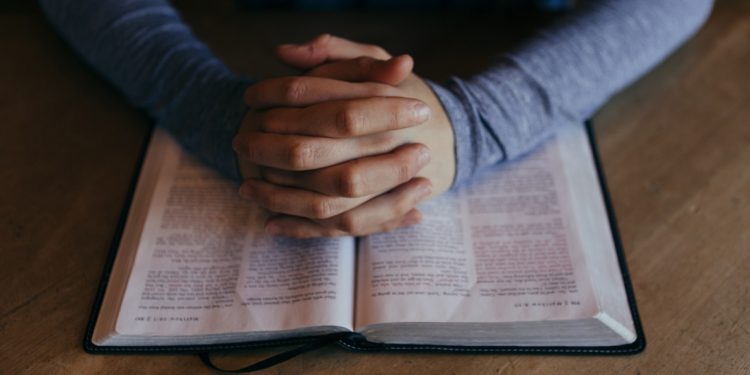What Does Religious OCD Look Like?

It may seem like Obsessive Compulsive Disorder (OCD) only causes patients to experience unwanted thoughts and compulsions about cleanliness and other similar obsessions. However, this disorder is multifaceted, causing different patients to fixate on different impulses.
Religious OCD is a common subsect typically experienced by children. It causes patients to become highly anxious about breaking religious rules and upsetting God, which is why this disorder is commonly confused with typical religious behaviour.
If you or a loved one are experiencing similar symptoms, it may be wise to consider understanding what religious OCD is. Here’s what religious OCD can look like, along with its symptoms and treatments.
What is Religious OCD?
Also known as scrupulosity, religious OCD is a specific disorder which causes the patient to feel troubled and anxious about religious worries. The patient stresses that they may break religious rules, commit sins, and upset God.
For example, someone with religious OCD may worry about misreading a prayer and repeat the prayer multiple times as a correction. They may fear that their good deeds have selfish intentions or unholy thoughts.
Most obsessions regarding religious OCD stem from doubting the intentions behind their good deeds, as patients often wonder whether their act was for God or the devil. As a result, the patients perform compulsive religious rituals and extreme avoidance. They believe in and fear severe or eternal punishments from a divine being, namely God.
Research suggests that approximately 5-33% of OCD patients suffer through scrupulosity, rising to 50-60% for OCD patients from religious backgrounds. Even those without religious upbringings may develop scrupulosity out of fear of being morally compromised.
What Does Religious OCD Look Like?
Scrupulosity can show up in the form of severe symptoms, such as:
● Reading or studying religious writings, books, and texts excessively
● Excessively apologizing to God and seeking forgiveness at all times
● Needing assurance about whether your behaviour is accurate or appropriate
● Compulsively praying or repeating prayers out of fear of errors
● Questioning your motives in numerous situations
● Overanalyzing your behaviour to ensure you “did the right thing.”
● Fear of being unclean or contaminated according to the rules of one’s religion
● Fear of not having enough faith
● Seeking continual reassurance from religious authorities
● Going to religious services much more often than required
● Obsessive prayer, repetition of mantras, or cleansing rituals
● Performing acts of extreme self-denial or self-sacrifice
● Fear of going to Hell
● Fear of committing immoral behaviour
Treatments for Religious OCD
Treatment for religious OCD can be more challenging than common cases of OCD, especially if the religious authorities around the patient validate their obsessive behaviour as being devoted.
However, understanding how OCD works is the first step to taking your power back. Scrupulosity can easily cause the patient to think their behaviour is an appropriate response to their intrusive, sinful thoughts.
Cognitive Behavioural Therapy
Aside from OCD medication, treatment for religious OCD typically revolves around cognitive behavioural therapy. This therapy is more helpful for the patient worrying about concrete actions, such as unknowingly eating pork. It can be less beneficial for intangible fears, like the fear of going to Hell, as it’s difficult to debate logic without making the patient feel isolated in therapy.
Exposure and Response Prevention Therapy
In most cases, exposure and response therapies are combined with medication for enhanced results.
Despite popular belief, OCD patients are not asked to give up their religious responsibilities during therapy but are given new ways to face their fears while living with their faith. Exposure with response prevention is one of the main ways to treat religious OCD, exposing patients to their fears in a safe environment.
The therapy begins with an assessment in which the patients rank their fears from minor stress to major worry. Then, the therapist exposes them to each fear, gradually increasing the severity of their anxiety over time.
Family Therapy
On the other hand, reconsidered reassurance is another part of religious OCD. Patients may ask questions like “Did I just commit a sin?”, demand a definitive answer, want people to participate in compulsive praying, or demand that others don’t say certain words to trigger their anxiety.
Providing reassurance is the natural response in such cases, but it can worsen their religious OCD over time. This is because the demand for reassurance will repeatedly arise, only feeding their anxious cycle without making any long-term progress. It also makes the religious OCD patient feel dependent on the people around them for temporary fixes.
As part of the scrupulosity treatment, experts suggest that family and friends learn to recognize OCD symptoms and deny reassurance when demanded. Ultimately, it’s another form of exposure therapy on a personal scale rather than in a therapist’s office.
Difference Between Scrupulosity and Religious Behavior
Religious OCD is common in those with religious upbringings, so it can be impossible for the patient to determine whether their behaviour is compulsive or appropriate. In addition, it’s common for religious people to want to please God and holy authorities, making religious OCD tricky.
The crucial thing to remember while differing between scrupulosity and normal religious behaviour is that the problem is fear, not religion. For example, the patient may perform religious and cleaning rituals more often than required or considered normal in their faith. In addition, normal religious behaviour doesn’t undermine the patient’s quality of life the way scrupulosity does: causing extreme anxiety, guilt, and shame.
Religious OCD can cause the patient to engage in religious practices and rituals to the extent that they neglect other important aspects of life, such as work, school, or family obligations.
Ironically, scrupulosity can end up interfering with one’s faith. For example, they may believe other followers aren’t taking the scriptures seriously enough, causing the patient to feel isolated from the family. They may also avoid attending religious meetings, fearing they’ll commit blasphemy. In addition, they may neglect certain rituals, assuming that their religion prohibits them.
Conclusion
Religious OCD is more common than it may seem, having an alarming 50-60% rate in OCD patients with religious backgrounds. Although scrupulosity may be hard to diagnose, there are various treatments that may help patients overcome their fears. Unfortunately, treating religious OCD can be tricky as the patient may easily feel misunderstood by therapists due to not sharing the same religious beliefs.










